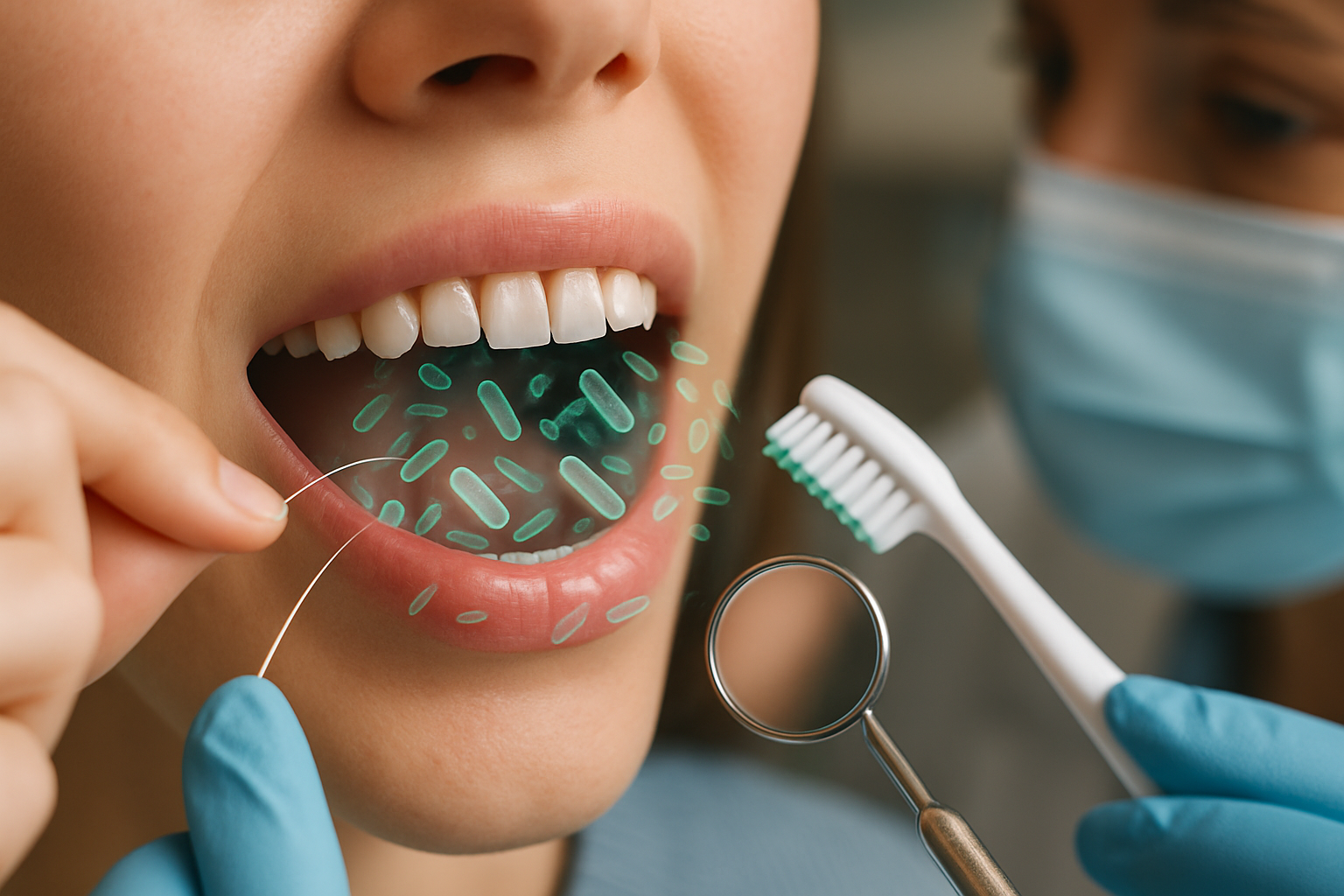The Complete Guide to Bad Breath: Treatment and Prevention
Bad breath, also known as halitosis, can be embarrassing and sometimes even anxiety-provoking. It's no wonder store shelves are filled with gum, mints, mouthwash, and other products to combat bad breath. But many of these products are just stopgap measures because they don't address the root cause. Certain foods, health conditions, and habits can contribute to bad breath. In many cases, consuming certain foods and having your teeth cleaned can improve bad breath. If you can't resolve your bad breath on your own, consult a dentist or other healthcare professional to make sure it's not caused by a more serious condition.

Halitosis, commonly known as bad breath, is a widespread condition that can cause embarrassment and social discomfort. While occasional bad breath is normal, persistent halitosis may indicate underlying oral health issues or medical conditions that require attention. Understanding the root causes and available treatments empowers individuals to take control of their oral health and maintain fresh breath throughout the day.
What Are the Primary Bad Breath Causes
The majority of bad breath cases originate in the mouth, where bacteria break down food particles and produce sulfur compounds. Poor oral hygiene allows plaque and food debris to accumulate between teeth and along the gum line, creating an ideal environment for odor-causing bacteria. Dry mouth, whether from medications, medical conditions, or simply not drinking enough water, reduces saliva production and allows bacteria to flourish unchecked.
Certain foods like garlic, onions, and spicy dishes contain volatile compounds that enter the bloodstream and are expelled through the lungs, causing temporary breath odor. Tobacco use not only leaves its own distinct smell but also dries the mouth and increases the risk of gum disease, both contributing factors to halitosis.
Understanding Halitosis and Its Medical Connections
While most bad breath stems from oral sources, approximately 10% of cases have medical origins. Respiratory infections, sinus problems, and postnasal drip can create conditions where bacteria thrive in the throat and nasal passages. Gastrointestinal issues, including acid reflux and stomach infections, may also contribute to persistent bad breath.
Certain medications, particularly those that cause dry mouth as a side effect, can indirectly lead to halitosis. Diabetes, liver disease, and kidney problems can produce distinctive breath odors that may indicate the need for medical evaluation. Understanding these connections helps individuals determine when professional medical consultation is necessary.
Effective Bad Breath Treatment Options
Successful bad breath treatment begins with establishing a thorough oral hygiene routine. Brushing teeth twice daily with fluoride toothpaste removes food particles and plaque, while daily flossing reaches areas between teeth where bacteria accumulate. Using an antimicrobial mouthwash can help reduce bacterial populations and neutralize odor-causing compounds.
Tongue cleaning deserves special attention, as the tongue’s rough surface harbors significant amounts of bacteria and food debris. Using a tongue scraper or brushing the tongue with a toothbrush can dramatically improve breath freshness. Regular dental cleanings and checkups allow professionals to remove hardened plaque and identify potential problems before they worsen.
Professional Treatment Costs and Provider Options
Professional bad breath treatment costs vary depending on the underlying cause and required interventions. Basic dental cleanings typically range from $75 to $200, while deep cleanings for gum disease may cost $150 to $300 per quadrant. Specialized halitosis clinics offer comprehensive evaluations and treatment plans, with initial consultations ranging from $200 to $500.
| Treatment Type | Provider | Cost Estimation |
|---|---|---|
| Basic Dental Cleaning | General Dentist | $75 - $200 |
| Deep Cleaning (Scaling) | Periodontist | $150 - $300 per quadrant |
| Halitosis Consultation | Specialized Clinic | $200 - $500 |
| Antimicrobial Therapy | Dental Hygienist | $100 - $250 |
| Medical Evaluation | Primary Care Physician | $150 - $300 |
Prices, rates, or cost estimates mentioned in this article are based on the latest available information but may change over time. Independent research is advised before making financial decisions.
Achieving the Best Breath Through Daily Habits
Maintaining optimal breath freshness requires consistent daily practices beyond basic oral hygiene. Staying well-hydrated keeps saliva production at healthy levels, naturally washing away food particles and bacteria. Chewing sugar-free gum stimulates saliva flow and can provide temporary breath improvement, particularly after meals.
Dietary choices significantly impact breath quality. Limiting foods high in sulfur compounds, reducing coffee and alcohol consumption, and incorporating fresh herbs like parsley or mint can naturally freshen breath. Regular meals prevent the ketosis-related breath odor that can occur during extended fasting periods.
Prevention Strategies for Long-Term Success
Preventing bad breath requires addressing both immediate causes and underlying risk factors. Quitting tobacco use eliminates a major source of mouth dryness and bacterial growth while improving overall oral health. Managing medical conditions like diabetes or sinus problems reduces their contribution to halitosis.
Regular dental visits every six months allow for early detection and treatment of gum disease, tooth decay, and other oral health issues that contribute to bad breath. Professional fluoride treatments and dental sealants can prevent cavities that harbor bacteria and cause odor.
Creating a comprehensive oral care routine that includes proper brushing technique, daily flossing, tongue cleaning, and appropriate mouthwash use establishes the foundation for long-term breath freshness. Consistency in these practices, combined with awareness of personal triggers and risk factors, enables individuals to maintain confidence in their oral health and social interactions.
This article is for informational purposes only and should not be considered medical advice. Please consult a qualified healthcare professional for personalized guidance and treatment.




